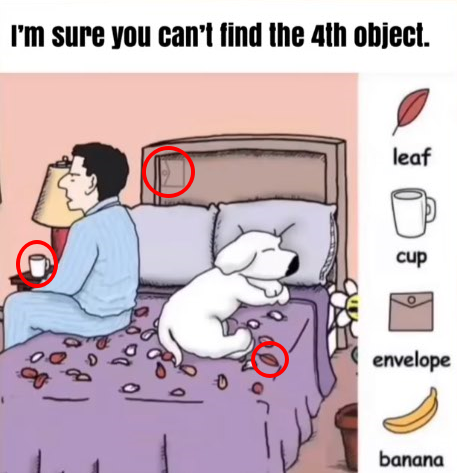Find leaf, cup, envelope and banana.
The Challenge of Hidden Object Games: Sharpening Your Observation Skills
Hidden object games have long been a staple of casual entertainment, but their appeal goes far beyond just passing the time. The image above perfectly captures the essence of these puzzles: a man and his dog sit on a bed scattered with leaves, petals, and other subtle items, while players are tasked with finding four specific objects—a leaf, a cup, an envelope, and a banana—hidden within the scene. Though it may seem simple at first glance, the challenge invites you into a deeper cognitive workout, engaging your brain in ways that promote mental agility, focus, and even emotional wellbeing. In this article, we’ll explore the fascinating world of hidden object games, uncover why they captivate millions, and how they benefit your brain and daily life.

The Psychology Behind Hidden Object Puzzles: Why We Love to Search
Humans have an innate desire to explore and make sense of their surroundings. This urge stems from evolutionary needs—spotting threats or opportunities required sharp observation and attention to detail. Hidden object puzzles tap directly into this ancient wiring by presenting a scenario where our visual system is challenged to sift through distractions and spot elusive targets.
That “aha!” moment when you finally find a hidden item releases dopamine, a feel-good neurotransmitter that rewards your brain and keeps you motivated. This positive feedback loop is part of what makes hidden object games so addictive and satisfying. Beyond entertainment, these puzzles stimulate our brain’s pattern recognition and problem-solving faculties, keeping us mentally active and engaged.
.
.
.
.
Answer:



